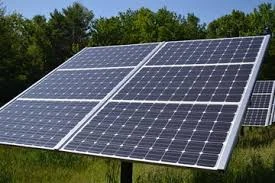solar panel size and capacity
Understanding Solar Panel Size and Capacity A Comprehensive Guide
As global awareness of renewable energy intensifies, solar energy has emerged as a leading option for sustainable power generation. Solar panels, the backbone of solar energy technology, come in various sizes and capacities, significantly influencing their efficiency and suitability for different applications. This article aims to elucidate the relationship between solar panel size and capacity, helping potential buyers and users make informed decisions.
What is Solar Panel Size?
The size of a solar panel is generally defined by its physical dimensions, typically measured in length and width. Standard residential solar panels usually have dimensions ranging from 1.6 meters by 1 meter to 1.7 meters by 1.1 meters, occupying about 17 to 18 square feet of roof space. However, the actual size of a solar panel can vary based on the manufacturer and technology used, with newer, more efficient models cropping up on the market.
What is Solar Panel Capacity?
Solar panel capacity refers to the maximum amount of power that a panel can generate under standard test conditions, usually measured in watts (W). For residential applications, most solar panels fall within the range of 250 to 400 watts per panel. A solar panel with a higher wattage capacity can produce more energy in a shorter timeframe compared to one with lower capacity, making capacity an essential consideration for consumers looking to optimize energy production.
The Relationship Between Size and Capacity
The relationship between solar panel size and capacity is crucial for both energy production and spatial efficiency. Generally, larger solar panels have higher power capacities, but this is not a strict rule. Advancements in technology and materials, such as monocrystalline solar cells, have enabled manufacturers to create more efficient panels that can produce higher amounts of electricity without significantly increasing their size.
However, it’s essential to consider both the available roof space and the energy needs of the household or business. A larger solar panel can produce more energy, but if roof space is limited, one must strategically select panels that achieve an optimal balance between size and power output. Furthermore, area restrictions may require homeowners to install multiple smaller panels instead of one large panel to meet their energy requirements.
solar panel size and capacity

Determining Energy Needs
When evaluating the size and capacity of solar panels, one must first assess their energy needs. For example, a household consuming an average of 900 kWh per month would typically require a solar panel system generating around 6-7 kW of power to cover its needs. This translates to around 20–25 panels, depending on the capacity of the selected panels.
To accurately gauge energy requirements, it’s vital to analyze past utility bills, taking note of seasonal and usage patterns. A comprehensive energy audit can also pinpoint where consumption is heaviest and identify potential energy savings measures that could impact the overall design and capacity of the solar power system.
Benefits of Matching Size and Capacity
Choosing the right size and capacity of solar panels not only ensures that you meet your energy demands efficiently but also offers other significant benefits. Adequate sizing allows for proper sunlight exposure, which can enhance panel efficiency and prolong the lifespan of the system. Moreover, the right combination can maximize the return on investment, as systems that are too large can lead to excess energy production that isn't effectively utilized.
In regions with robust sunshine, such as parts of the southwestern United States, solar panels with higher capacities can be particularly advantageous. Conversely, areas with less sunlight may benefit from smaller, high-efficiency panels to maximize energy production per square foot.
Conclusion
Understanding solar panel size and capacity is essential for anyone considering a transition to solar energy. It allows consumers to make informed choices that not only meet their energy needs but also optimize their investments in renewable technology. With advances in solar technology continually evolving, individuals can now choose from a wide selection of compact and efficient panels, tailored to maximize energy output regardless of available space. As the world shifts towards greener energy solutions, proper planning and knowledge of these two critical factors will play a pivotal role in successfully harnessing the power of the sun.
-
Understanding the Advantages of Solar String Inverters for Your Energy SystemNewsApr.29,2025
-
Choosing the Right PV Inverter: A Comprehensive GuideNewsApr.29,2025
-
The Future of Solar Power: Exploring Bifacial Solar PanelsNewsApr.29,2025
-
The Complete Guide to Solar Panels: Efficiency, Cost, And InstallationNewsApr.29,2025
-
The Best Options for Efficiency and Cost-EffectivenessNewsApr.29,2025
-
Harnessing the Power of Off-Grid Solar Inverters for Energy IndependenceNewsApr.29,2025







